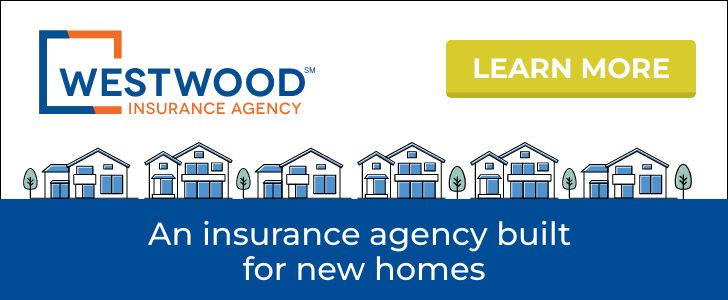Leadership
Peace Of Mind – The Absence of Worry – Is A CX Super Power
Homebuying customers’ pursuit of what’s often the most valued and costly purchase they’ll ever make – and one full of unknowns -- has at least two distinct streams of value-making. One stream is the customer’s shopping and purchase journey. The other dwells in the livability and ownership journey.

Not long ago, Oakwood Homes chairman and CEO Pat Hamill described an ultimate goal he has in running a homebuilding operation.
If we did all we should do for the consumer buying our home, the entire experience would be all about them,” he said. “They would be the center of the universe -- and it would barely cross their mind how we do what we do. The way it works now, it’s too much about us, and the consumer experience slips down in the rankings of our focus. Someday, that consumer will be at the top, and our processes will all go on without interfering in what they experience.”
Oakwood’s Hamill recognized that peace of mind is – in the minds and hearts of customers – part of the deal, not just a great house to live in after the transaction.
Many more homebuilding strategists, business owners, and leaders also now realize that homebuying customers’ pursuit of what’s often the most valued and costly purchase they’ll ever make – and one full of unknowns -- has at least two distinct and separate streams of value-making. One stream is the customer’s shopping and purchase journey. The other dwells in the livability and ownership journey.
Builders want to make sure that their customer has the best possible experience and relationship that they can,” says Tom Kriby, Vice President, Client Development and Partnerships at Westwood Insurance Agency. “Not only does that provide opportunities for referrals, but also, for example, five years down the road when they're thinking about doing a move up home they want to be able to draw on that positive experience from five years ago that says, ‘yeah, I'd love to do business again because they thought about everything for me and I didn't have to be on my own, doing some research and finding out every little aspect that needed to be done.’ That’s how you want to impact their experience now.”
Call it the return on peace-of-mind investment. And in crazy times like now, it’s more important than ever.

The Backdrop: Focus Product, Not Customers
For too long, homebuilders and their construction, manufacturer, and services partners operated with a belief that customers’ motivation to get to that livability and ownership goal, they’d go to any length. Further, this mindset suggested, customers would tolerate a painful and anxious passage through shopping and buying to finally reach the moment keys to the new home would be in their hands.
Today’s market conditions – rampant with volatility, mixed-signals, and complicated outlooks – serve as an inflection point in raising the bar on customer experience, not just in valuing their purchase as an owner, but in the journey as well.
Marketing guru Seth Godin – a master of consumer intelligence wisdom in minimalist doses – writes:
The good china
Once you use your plates every day, they cease to be the good china.
Of course, the plates didn’t change. Your story did. The way you treat them did.
The same goes for the red carpet. If you roll it out for every visitor or every customer, it ceases to be red.
Godin’s parable reflects the same imperative Oakwood Homes ceo Pat Hamill expressed with respect to what customers should experience and what homebuilders and their partners should do to effect that experience, to bring it about.
As Hamill inferred, the best possible proof of a positive customer experience might be that he or she is mindful more of their own needs, aspirations, and motivations, and less conscious of the barriers to them. Like Godin says, “if you roll [the red carpet] out for every visitor or every customer, it ceases to be red.”
When customer care and experience work best, they’re almost inconspicuous by their absence in terms of friction points. When we’re aware of something, it’s like an alarm or red flag alert. When the process doesn’t force itself on us, and make us acutely aware of our own shortcomings as intelligent decision-makers, we feel the effects of peace-of-mind.
Nowhere is this particular sense of the customer experience more clear than when it comes to homeowners insurance, a matter that figures into both a customer’s home buying journey and the total cost and value homeownership experience post-transaction and settlement.
There’s that ease of mind a customer feels in doing business,” says Westwood Insurance Agency’s Kriby. “It comes because a builder is an expert at building at home and they want to sell that home. If we can help smooth the rest of that sales process out for them, the builder’s happy, which makes the customer happy as well.”
Kriby notes that in today’s fits-and-starts demand dynamics where price concessions, incentives, and upgrades are part of the flow of buyers’ journey, a transparent, locked-in insurance policy budget item, and a firm escrow figure can reward both buyer and seller as the deal finalizes.
The builder can budget accordingly and let the buyer know that, ‘hey, maybe there's a little bit more they can add in on the home,’” Kriby says. “It might be an upgrade or, perhaps, a rate buy-down, given that mortgage rates are running higher than they have been in the last 5-10 years.”
Those common-ground pain points – anxiety, inexperience, and overwhelm – tend to run consistent, no matter where first- or even second-time move-up homebuyers may find themselves somewhere in the “buyer’s journey.” What’s not consistent – especially as regards to customers finding and securing insurance coverages they can lock-in to moment they put down their new home deposit and go to contract – is a dizzying maze of challenges related to homeowners’ insurance in the nation’s widely varied climate zones, each with an array of natural hazard risks. Wildfires, flooding, hurricanes, tornadoes, earthquakes, etc. – each geographical region seems to have one or more of these challenges.
The fact is that we have a product for all different states and all different types of perils, natural disasters,” says Kriby. “We can also offer solutions for flood, because – again, going back to a first-time home buyer, they very often don't understand flood insurance is not included in your basic policy. We can help that customer secure all coverage options for their new home that they're buying, wherever it may be. What’s more, we've worked with builders before they’ve broken ground. They ask us, ‘hey, if we were to open a community here, would we have issues securing or offering insurance to the home buying customer?’ We've able to give first-hand knowledge to that builder.”
Fact is, when partners like Westwood Insurance Agency do their job, both their direct customers – homebuilders and their customer homebuyers – can take a mental break from having to sweat all the details, navigate the complexities, and, most of all, worry about whether they know what they need to know to get what they need.
That’s how peace of mind works. In its pure form, it’s the absence of anxiety, and the removal of the friction of a mind-numbing, obstacle course of minutia.
A builder wants to make sure that they have as many positive reviews as possible, and that means having an offering and a solution for anything that a homebuyer might want and not just on the home that they're buying itself, but everything that flows through that transaction,” Westwood Insurance Agency’s Kriby says. “You want to have the best experience, and rely on the fact that the builder has thought about these things for the homebuyer. That all adds just that extra step of appreciation, and sense of security. This elevates the builder’s reputation. Buyers’ see them as experts in all of these things. Meanwhile, the homebuyer can focus on getting into the new house, and they want to leave nagging minutia to the expert. If a builder provides that offering, it’s an extra way to create an experience of delight and peace of mind. That’s when the customer’s referrals really start to kick in.”
MORE IN Leadership
Certainty Sells Homes: Simplicity As A Spring Lifeline
Buyers are nervous—and uncertain. Builders who embed clarity, trust, and insurance upfront gain an edge. Exclusive insights from Westwood Insurance Agency’s Christine Geeslin show why radical simplicity is no longer optional.
Tariffs, Land, A Turning Tide: Private Builders Reclaim Ground
Post-tariff fallout creates a rare opening for nimble private builders to seize deals public giants walk away from.
Warren Buffett’s Timeless Wisdom: A Blueprint for Builders
In his final shareholder meeting (as CEO), Warren Buffett emphasized long-term thinking, humility, and trust—principles that resonate deeply with homebuilding professionals facing today's market challenges.


